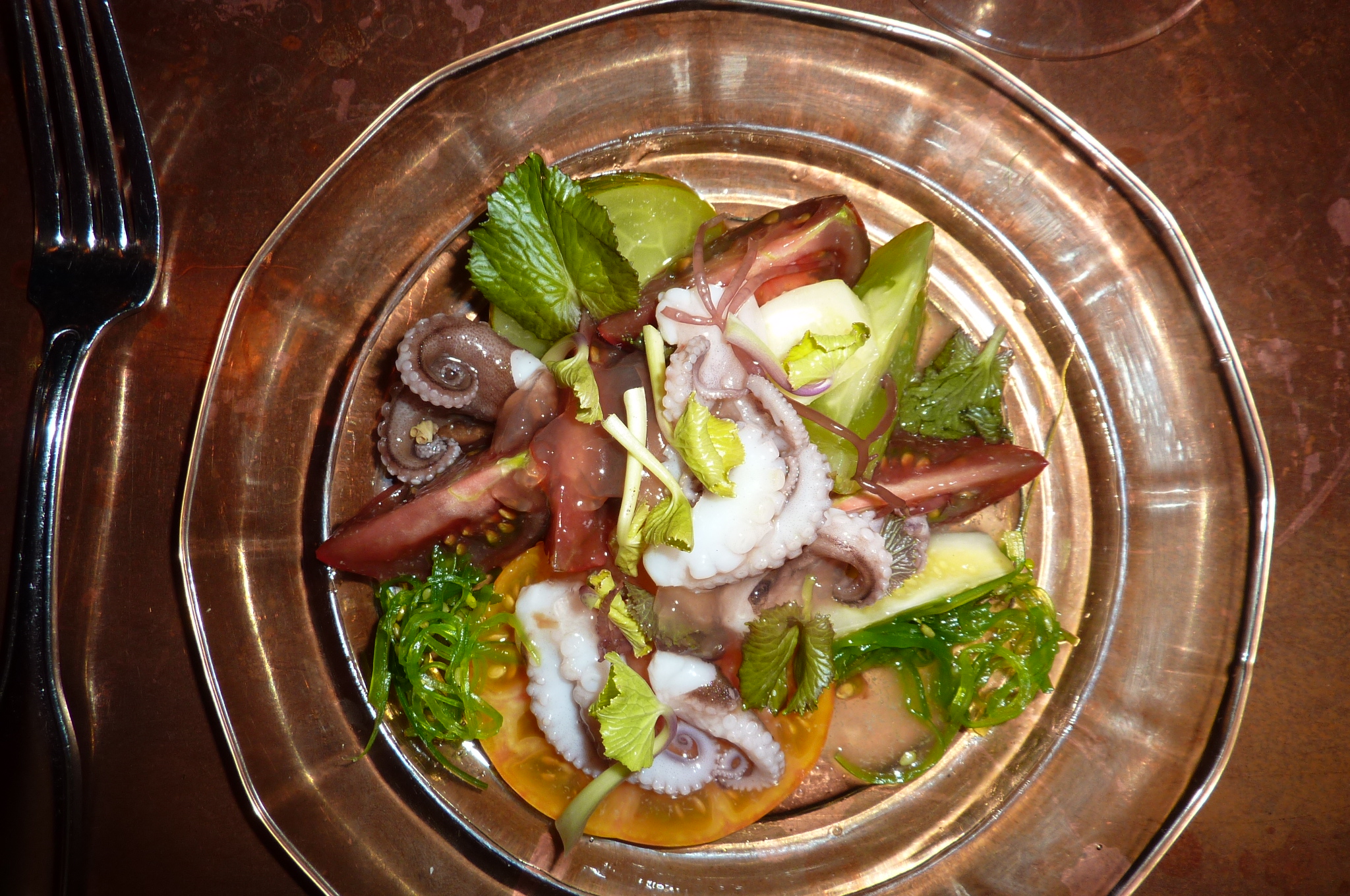When you think of wasabi what do you imagine? For some of you it’s the Bud Light commercial that ran in the 90s that featured minivan man yelling the word Wuuuhhhhsssaaaaaaabiiiiiii and snorting. Most likely it’s the hot, no-color-like-this-in-nature green, sinus-clearing paste that accompanies sushi. You may think of embarrassing nose drip on a date you’d rather forget.
You may think of your favorite sushi place. This thought may be accompanied by a feeling of acute ignorance at the majority of menu items which force you to order the Dragon Rolls each and every time.
You may think of feeling like a true gaijin for not yet knowing how to master chopsticks.
If you are thinking any of these, you are not alone. You have friends; or at least compatriots. I am one of them. Being a wasabi grower, I know much less about Japanese dining etiquette than I’d secretly prefer.
The following two facts will help you – dear reader – know a bit more about Japanese food than you know prior to reading this piece:
The “wasabi” provided for free at sushi restaurants is horseradish, food dye and binders. It is hot, but relatively flavorless.
Real, fresh wasabi is used as a flavor-enhancer as well as to add a slight heat and is used akin to western dishes usage of salt and garlic. It is not used solely for heat. Really; not heat – flavor. It’s not a palette cleanser. Put just a bit on your sushi, steak, pork (or pork sandwich), noodle dish, mashed potatoes, or other recipes. Often, wasabi will be placed between the fish and rice in sashimi. This regulates the heat and releases more flavor as one chews.
Now, if your name is David Padberg and you are a European and Japanese trained chef, who has apprenticed himself on both continents - likely hauling water buckets before dawn, sweeping the kitchen between shifts, waxing on and waxing off to earn both his beret and his hakama, you might think to yourself the following:
- I could make a wasabi snowcone (called a granita) and scoop a bit onto an oyster to bring out the organic flavors of the meat.
- I could set a wasabi rhizome in the refrigerator for two months and use the chlorophyll-free shoots that grow from the top in a salad. The shoots would concentrate flavor and heat virtually erupting on the palette.
- I could make a puree for steak that would taste like an asparagus spear on the fork with a bite of steak.
- I could make ice cream and use the vegetal flavor of the wasabi to pair with a savory fruit.
Our good friend David Padberg; Chef De Cuisine at Park Kitchen created a five course, wasabi-centered dinner with plants we grew from wee little plantlings. It was incredibly satisfying to experience a chef using our product. Upon seeing that first dish, I finally felt our success was complete. It was poignant and personal. It was a tangible representation of our hard work. It was as if our effort had been transformed by another’s creative hand and returned to us. It was an honor.
I can’t thank David enough for the supper. I am also appreciative of the restaurant’s staff for accommodating our five hour meal. Lastly, I’m grateful for the end-of-meal late night conversation at the bar with his lovely.
The below is a list of the courses, photos and our meager attempts to describe what one should feel to truly understand.
Hors D’oeuvres Netarts bay oyster. Wasabi granita. Roe: The granita was sweet like natural shave ice. The combination gave an ocean taste at the front of the mouth and a sweet flavor finishing. The presentation on a bed of seaweed and polished rocks with a wasabi leaf was a masterpiece.
Appetizer: octopus sautéed in olive oil, wasabi jelly, tomatoes, cucumber, nori and wasabi leaves. These wasabi leaves were grown without sunlight from an offshoot in the Chef’s refrigerator. They are significantly hotter than green wasabi leaves. The wasabi leaves provide a constant flavor, like a denominator which allows the transition for the other flavors to cycle through. The wasabi becomes hotter in the mouth the more its chewerd providing a blast of flavor at the end like a full symphony sound.
The Fish Course. Wasabi aioli. Albacore. Grapes. Rice: The aioli is the richest tasting aioli ever. It meted the vinegar taste of aioli and gave it an earthy richness. I'm dreaming of this on my next hamburger at the Bent Brick (hint hint nudge nudge). The heat at the end provided a cacophony of flavors. Rice was the first flavor followed by grape, then wasabi and fish to make a combine into a complete meal-like taste. The sweet grapes lingered with the wasabi’s heat.
Main Course: Steak. Pedron peppers, chanterelles, beans. Wasabi butter and leaf puree: The steak tasted like the cows ate honey and clover their entire lives. The wasabi butter keeps the flavor from running away too quickly. The beans are breaklike and when eaten with all the ingredients are like the best steak sandwich ever. When separate, the butter wasabi enhances the steak flavor like ground pepper.
Dessert: Plum tomatoe pecan crisp with basil/wasabi ice cream: Makes the mouth tingle; it’s possible to feel the wasbi in the ice cream. Perfectly balanced sweet and savory.
I hope you are as hungry reading this as I have been in writing. You would be correct if you may have thought these dishes were astonishing their flavor and uniqueness. It left this patron with the inevitable conclusion that this fella did not waste his novitiate sneaking calvados in the back room with the paysans. He likely washed dishes with one hand and held food chemistry books with the other. This meal was so good that I exited the table undecided as whether to exclaim, or not tell a single soul as to keep the secret unto myself for all eternity. I chose the former…..






